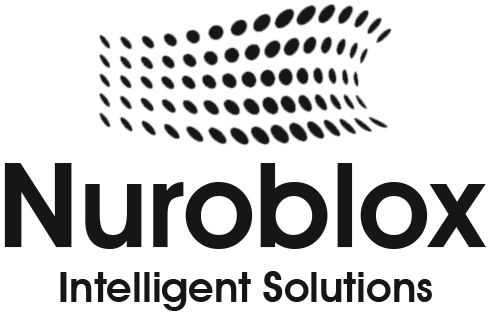10 Best Robotic Process Automation (RPA) Tools in 2025
As businesses continue their digital transformation journeys in 2025, Robotic Process Automation (RPA) has emerged as a core enabler of efficiency, accuracy, and scalability. From automating routine back office operations to enabling intelligent workflows powered by AI, RPA tools are helping organizations reduce manual effort, lower operational costs, and improve productivity across departments.
With dozens of platforms available today, each offering varying degrees of sophistication, integration, and intelligence, choosing the right RPA tool is more important than ever. Whether you’re a growing startup or a global enterprise, the right automation solution can streamline processes, enhance compliance, and free up human talent for more strategic work.
In this guide, we’ll explore the best 10 RPA tools to know in 2025, highlighting their key features, strengths, and ideal use cases, so you can make an informed decision about which platform best fits your business needs.
Key Criteria for Evaluating RPA Tools

Below are the key criteria to consider when evaluating RPA tools:
1. Ease of Use and User Experience
- Why it matters: A user-friendly interface speeds up development and reduces reliance on IT.
- What to look for: Drag and drop workflow builders, intuitive dashboards, reusable components, and support for citizen developers (non technical users).
2. Scalability and Performance
- Why it matters: As automation grows, your tool must handle more bots, processes, and data without bottlenecks.
- What to look for: Horizontal scaling capabilities, multi bot orchestration, distributed architecture, and support for cloud/hybrid deployments.
3. Integration Capabilities
- Why it matters: RPA tools must connect seamlessly with your existing systems, ERP, CRM, databases, SaaS, legacy apps, etc.
- What to look for: Native connectors, API support, webhooks, and out of the box integration with popular platforms (e.g., SAP, Salesforce, Microsoft 365).
4. AI and Cognitive Capabilities
- Why it matters: Intelligent automation goes beyond rule based tasks. AI enables bots to handle unstructured data and make smart decisions.
- What to look for: Natural Language Processing (NLP), computer vision, optical character recognition (OCR), machine learning (ML) model integration, and AI powered document processing.
5. Security and Governance
- Why it matters: RPA bots often handle sensitive data and interact with critical systems.
- What to look for: Role based access control (RBAC), audit trails, encryption, bot authentication, and compliance with regulations like GDPR, HIPAA, and SOC 2.
6. Bot Management and Orchestration
- Why it matters: Efficiently managing, scheduling, and monitoring bots ensures smooth operation at scale.
- What to look for: Centralized control panel, real time monitoring, version control, alerts, and logging tools.
7. Licensing and Cost Structure
- Why it matters: RPA ROI depends on cost efficiency, especially for long term scaling.
- What to look for: Transparent pricing, flexible plans (pay per bot, pay per task, or usage based), and total cost of ownership including training and maintenance.
8. Community and Support
- Why it matters: A strong community and reliable vendor support reduce development time and troubleshooting.
- What to look for: Access to documentation, forums, partner ecosystems, certifications, and enterprise level customer support (24/7 if needed).
9. Customization and Extensibility
- Why it matters: Every organization has unique needs that may not be fully met by out of the box solutions.
- What to look for: SDKs, custom script support (e.g., Python, JavaScript), modular architecture, and plugin ecosystems.
10. Analytics and Reporting
- Why it matters: Visibility into bot performance and automation ROI is critical for improvement.
- What to look for: Built in dashboards, KPI tracking, process insights, and integration with BI tools like Power BI or Tableau.
Pro Tip:
Before committing to any RPA platform, run a proof of concept (PoC) using a real use case in your organization. This will help you evaluate how well the tool performs in your specific environment.
Top Robotic Process Automation Tools in 2025
In 2025, the Robotic Process Automation (RPA) landscape is more competitive and advanced than ever. Enterprises are no longer just looking for task automation; they want intelligent, scalable, and AI powered platforms. Below are the top RPA tools leading the automation revolution, starting with three of the most dominant players in the space: UiPath, Automation Anywhere, and Blue Prism.
1. NuroBlox
NuroBlox is a next-generation automation platform that blends the power of Robotic Process Automation (RPA), AI agents, and orchestration into a single, unified system. Designed with an AI-first approach, NuroBlox empowers businesses to automate not just repetitive tasks but entire workflows with contextual decision-making and scalability in mind.
Its modular platform featuring NuroAgent, NuroFlow, and NuroTask enables users to design, execute, and monitor intelligent automations without deep technical expertise. With strong privacy-first principles and secure cloud-native architecture, NuroBlox is ideal for enterprises ready to scale beyond traditional RPA.
Key Features
- NuroAgent: Pre-trained AI agents that handle intelligent, dynamic workflows
- NuroFlow: Drag-and-drop workflow orchestrator with multi-step logic
- NuroTask: Human-in-the-loop task management with SLA tracking
- NuroStore: Marketplace of prebuilt bots, components, and accelerators
- Private AI & Secure Cloud Hosting: Data privacy-first infrastructure
- End-to-End Monitoring: Real-time visibility into task status and performance
Strengths
- AI-native platform purpose-built for intelligent automation
- Combines RPA, orchestration, and AI agents in one ecosystem
- No-code/low-code builder for rapid deployment
- Designed for secure enterprise use with full audit trails
- Scalable from pilot to enterprise-wide automation programs
Best For
- Organizations seeking secure, private, and intelligent automation platforms
- Mid to large enterprises focused on hyperautomation and AI-driven workflows
- Teams looking to automate both structured and unstructured processes
2. UiPath
UiPath is one of the most widely adopted and comprehensive RPA platforms available today. It offers a robust suite of tools that supports everything from simple task automation to complex, enterprise wide process orchestration. With its AI powered capabilities and low code environment, UiPath has become a go-to solution for companies looking to scale automation quickly and efficiently.
Key Features
- Studio and StudioX for developers and business users
- AI Center to bring machine learning into workflows
- Task & Process Mining to discover and optimize automation opportunities
- Cloud, on premise, or hybrid deployment
- Marketplace (UiPath Go!) with thousands of prebuilt automation components
Strengths
- Extremely user friendly with a visual drag and drop builder
- Rich integration ecosystem (ERP, CRM, cloud platforms)
- Strong documentation, tutorials, and community support
- Enterprise grade security and governance
Best For
- Mid to large enterprises seeking full stack intelligent automation
- Organizations looking to combine RPA with AI and ML models
3. Automation Anywhere
Automation Anywhere is a cloud native, AI infused RPA platform that focuses on delivering scalable, enterprise grade automation. Known for its simplicity and speed, it supports automation across various industries and departments while offering a rich bot marketplace and seamless integration with cloud services.
Key Features
- Bot Insight for real time analytics on bot performance
- Automation Co Pilot for embedded automation in everyday tools (like Salesforce and Excel)
- Discovery Bot to identify high impact automation opportunities using AI
- Document automation using built in intelligent document processing (IDP)
- Bot Store with reusable automation templates
Strengths
- Cloud first architecture (no heavy on premise setup required)
- Strong focus on business user accessibility
- Built in AI/ML tools to handle semi structured/unstructured data
- High scalability and global deployment capabilities
Best For
- Large scale enterprises needing secure, scalable cloud automation
- Businesses focusing on document heavy or customer facing operations
4. Blue Prism
Blue Prism is one of the original pioneers of RPA, focusing heavily on enterprise grade automation. Known for its strong security, auditability, and scalability, Blue Prism is ideal for industries where compliance and control are non negotiable, such as finance, insurance, and healthcare.
Key Features
- Digital Workers that can automate complex, rule based business processes
- Control Room for real time bot orchestration and monitoring
- Integration with AI and ML tools via Blue Prism’s Digital Exchange (DX)
- Robust governance and role based access controls
- Process Intelligence features to improve automation ROI
Strengths
- Highly secure and compliant with enterprise IT requirements
- Strong in regulated industries
- Centralized control and visibility for large bot fleets
- Seamless integration with leading AI tools and platforms (e.g., AWS, Google Cloud, IBM Watson)
Best For
- Large, regulated enterprises with complex legacy systems
- Companies looking for deep control and governance of their digital workforce
5. Pega Robotic Automation
Pega is best known for its enterprise grade Business Process Management (BPM) capabilities, but it also offers powerful RPA functionalities as part of its Pega Platform™. Pega RPA focuses on intelligent automation blending case management, workflow orchestration, AI decisioning, and robotic automation into a unified experience.
Key Features
- Unified BPM + RPA platform
- Intelligent Decision Hub for real time AI powered insights
- Low code application development tools
- Seamless integration with CRMs, ERPs, and legacy systems
- Native case management and process modeling
Strengths
- Strong focus on end to end automation, not just task level automation
- Ideal for complex workflows involving both humans and bots
- Industry specific solutions in finance, healthcare, and insurance
- Integrated AI for dynamic, context aware automation
Best For
- Large enterprises with complex, customer facing processes
- Businesses seeking tightly integrated BPM + RPA capabilities
6. Workato
Workato is an iPaaS (Integration Platform as a Service) solution that also offers powerful automation capabilities, making it a go-to platform for combining RPA, API automation, and data integration. It’s highly regarded for its ease of use, no code UX, and ability to create cross system automations across SaaS apps and on prem systems.
Key Features
- No code recipe builder for automating multi step workflows
- Prebuilt connectors for over 1,000+ applications (e.g., Salesforce, Slack, NetSuite)
- AI powered triggers and actions
- Event driven and scheduled automation support
- Enterprise grade governance, version control, and collaboration tools
Strengths
- Exceptionally easy to use with a visual interface
- Ideal for both business users and IT teams
- Fast deployment, high flexibility
- Perfect for automating cloud native and SaaS heavy environments
Best For
- Mid sized to large enterprises with hybrid automation and integration needs
- Organizations focused on fast, cross departmental workflow automation
7. Akka (Lightbend)
Akka, developed by Lightbend, is not a traditional RPA tool; rather, it’s a toolkit for building concurrent, distributed, and resilient message driven applications. In modern automation ecosystems, Akka is being adopted as a backend foundation for building highly scalable, event driven automation systems, especially where real time processing and orchestration are key.
Key Features
- Actor based model for managing concurrency and scalability
- Fault tolerant, distributed architecture
- Built for microservices and reactive systems
- High performance automation backends and event engines
- Integration with Scala, Java, and Kubernetes
Strengths
- Ideal for building custom, large scale automation infrastructure
- Extremely reliable for streaming, data processing, and orchestration
- Compatible with AI/ML models and real time event processing
- Preferred for fintech, IoT, telecom, and high frequency systems
Best For
- Developers building automation into real time digital platforms
- Enterprises looking for high performance, event driven automation infrastructure
- Advanced use cases needing concurrency, fault tolerance, and microservices
8. n8n
n8n (pronounced “n eight n”) is an open source workflow automation tool that allows developers and business users to create complex workflows across hundreds of applications. While not a traditional RPA tool, n8n is increasingly being used for automation use cases that require control, transparency, and customization especially by startups and tech teams.
Key Features
- Visual workflow builder with drag and drop interface
- Self hosted or cloud hosted options
- Supports JavaScript based logic inside workflows
- Native integrations with 400+ services (APIs, databases, tools like Slack, GitHub, Airtable)
- Community plugins and custom node development
Strengths
- Full code access for flexibility and transparency
- Ideal for automating APIs, microservices, and backend systems
- Strong open source community and rapid development
- Great for technical teams needing fine grained control
Best For
- Developers and startups needing customizable automation
- Teams building internal automation and integrations with full control
- Organizations prioritizing open source or local data hosting
9. Make (formerly Integromat)
Make is a powerful, visual integration and automation platform that enables users to create complex scenarios connecting apps, services, and databases. With a clean interface and powerful data manipulation features, Make stands out in 2025 as a no code/low code RPA alternative for automating cloud based workflows.
Key Features
- Visual drag and drop automation canvas
- Prebuilt integrations with 1,000+ apps and services
- Real time and scheduled triggers
- Advanced data mapping, filtering, and error handling
- Support for custom APIs and webhooks
Strengths
- Intuitive UX for non technical users
- Highly customizable and visual
- Scalable for multi step, logic based workflows
- Affordable compared to enterprise RPA tools
Best For
- Marketing, sales, and operations teams
- SMEs looking to automate SaaS heavy environments
- Fast moving startups that need affordable, flexible automation
10. Kofax RPA
Kofax RPA is an enterprise grade RPA platform that specializes in automating data intensive, document heavy processes. It is widely used in sectors like finance, legal, insurance, and logistics where organizations need intelligent document processing combined with rule based automation.
Key Features
- Document intelligence & OCR with AI based classification
- Bot builder and robot lifecycle management tools
- Integration with ERP, CRM, legacy systems
- Built in analytics, reporting, and ROI tracking
- On premise and cloud deployment options
Strengths
- Exceptional for automating forms, invoices, claims, and other structured/unstructured documents
- Highly secure and enterprise ready
- Combines RPA, cognitive capture, and process orchestration
- Strong partner ecosystem and industry presence
Best For
- Enterprises with document heavy workflows
- Financial services, insurance, healthcare, and legal industries
- Organizations requiring end to end automation and compliance ready bots
Conclusion
As businesses continue to embrace automation, choosing the right Robotic Process Automation (RPA) tool is more important than ever. The tools highlighted in this list ranging from enterprise grade platforms to user-friendly solutions, offer a variety of features to suit different business needs, industries, and technical skill levels.
Whether you’re just starting out with automation or looking to scale existing workflows, the right RPA platform can help you streamline operations, reduce manual effort, and drive smarter, faster decision making. As 2025 unfolds, staying informed about the best tools will ensure your organization remains competitive, efficient, and ready for the future of work.
Now is the time to assess your goals, test your options, and take the next step toward a more automated, agile business.


